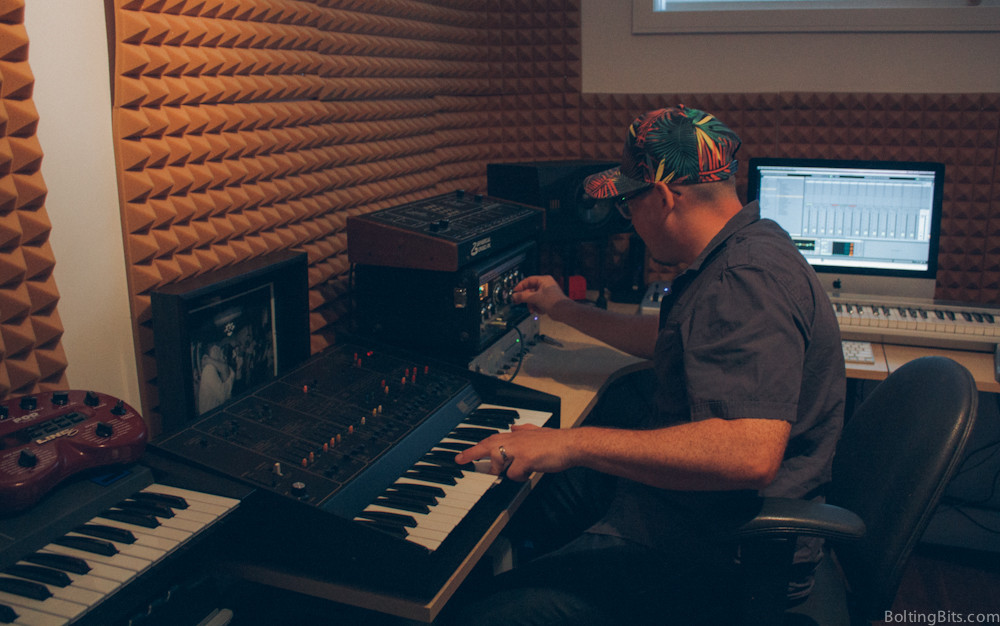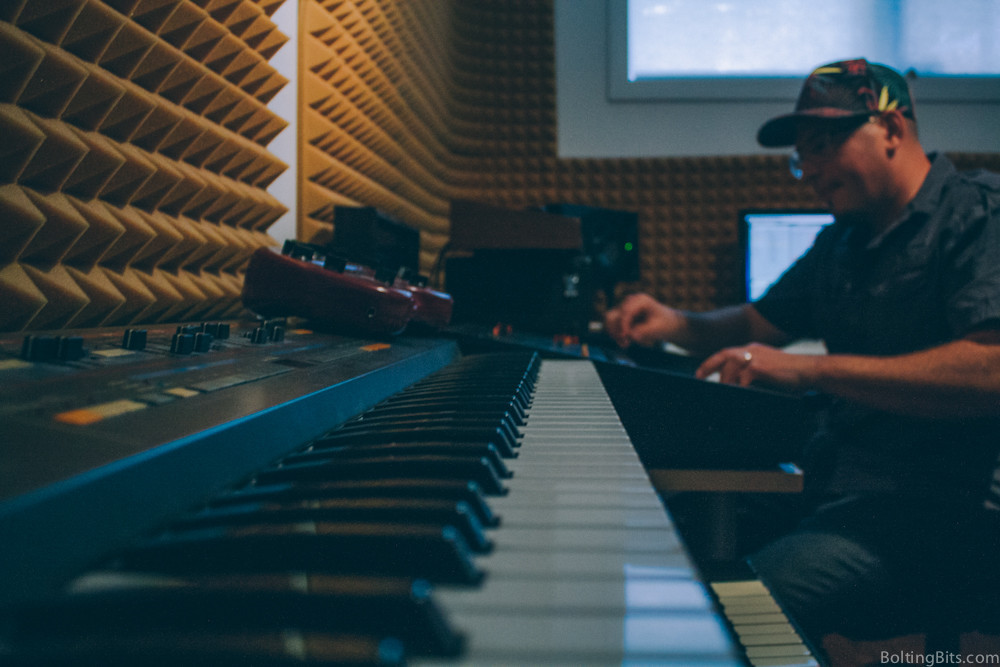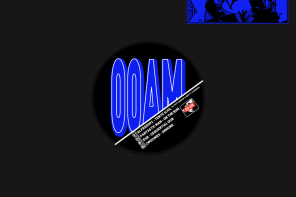
We sat down with Kinjo Music and Editorial Records head honcho and all around nice guy, Dave Allison, to discuss his roots in Montreal’s dance scene, his evolution as a producer and DJ, and to find out about all the musical goodies we can expect from him in the future. We’re also including, as a very generous gift from Dave himself, a four track sampler of his which can be downloaded for free at your pleasure!
[soundcloud url=”https://soundcloud.com/boltingbits/mixedby-dave-allison” /]
INTERVIEW
Can you describe your musical background and some of your early influences? Are there any figures in particular that inspired you to get into DJing and producing?
One of my first favourites was listening to rap in the late 80’s. A friend in grade four had some cassette tapes from his older brother that I borrowed. Shortly after that, I went to visit my grandparents in LA and they took me to Tower Records. Without my dad there to wave the finger at anything with the “parental advisory explicit lyrics” logo, I snapped up N.W.A. – Straight Outta Compton, 2 live Crew – As Nasty As They Wanna Be, Public Enemy – It Takes A Nation Of Millions To Hold Us Back, and Ice T’s Power and The Iceberg.
When I got in the car my grandma said “Shall we listen to what you got?” To which I replied, “Uhhh I don’t think you will like it Grandma. It’s not really your style.” Fast forward to the age of 17 in the mid 90’s – I attended my first rave and was blown away by the culture and instantly fell in love with funky breaks. Electroliners, Simply Jeff, and Bassbin Twins were some of my favourites at that time.

There was a common theme of sampling disco drums and funk breaks that ran through both, though I didn’t really make that connection then. Seeing DJ Slim over at a friend’s house before an event, probably in ’96, doing some crazy scratching over funky breaks had me so hooked that I needed to get into it and try for myself!
The first two records I bought at the local record shop after deciding I wanted to learn to mix was Endtroducing by DJ Shadow and Atomic Moog 2000 by Coldcut. Probably the single most influential mix tape I ever listened to was Journeys By DJ by Coldcut. I must have listen to it a few hundred times… Blending the reggae sounds of Junior Reid and Ninja Tune jungle breaks, mixing in half time, and seamlessly changing bpms was totally genius.
By the late 90’s, I was also finding a closer and closer connection to funky house. I spent numerous nights at Stereo Afterhours listening to Derrick Carter, Joeski , Onions, and Mark Farina. The United DJs of America compilations from Derrick and Mark were totally in my wheelhouse. Every track was fantastic and the mixing impeccable. Sebastien Leger, DJ Deep, Jedi Knights, Stacy Kidd, Inland Knights – they had me goin’ on that funky deep. And the disco loops..!
The first time I saw a sequencer, my programmer roommate was using Fast Tracker, which is far from intuitive but, after trying it out and getting the basic idea, I started with Acid Pro 1.0 software, and many, many late nights staring at a screen began!
You got your start DJing in Montreal in the 90’s. What was the city’s dance scene like back then, and how would you say that it has changed?

Hmm, it’s undoubtedly different. I think anyone who grew up in the mid to late 90’s here would tell you it was kind of a golden era for this music, as it had forged ahead to a larger base, growing significantly from the extreme underground of the early raves in 92-93.
There were quality clubs that emerged, bringing in world class talent. Angel’s, Jai Bar, and amazing afterhours like Sona and Stereo. The music was getting bigger but still very far removed from everyday life and culture like it is now. There is certainly no going back though.
Your predominant musical style seems to have evolved over the years from a jacking Chicago house sound to one that is slower in tempo and based more on classic boogie, funk and disco. Was this a conscious decision and, if so, what were your reasons for changing direction?
This was something that evolved very organically. I started a residency at Salon Daomé in 2007, about a year after starting Kinjo Music, which was a monthly Friday night that ran for 3 years. I was very much dialed into a funky house sound then, and there were more than a few epic nights there with guests such as Miles Maeda, Raoul Belmans, etc. When I did not have a guest, I would play a 5 hour plus set. At first it was ok for me playing a more deep house sound at the beginning of the night, but I felt the bpm range was too rigid and sounded too boxed in, being in a range of about 121-128. I began to explore the more dubby bass guitar and echoey drum stuff of Chicken Lips, as well as boogie influences such as Spirit Catcher, plus stuff by Ray Mang, Sessions Recordings, and Instruments of Rapture. And I also gravitated to starting the night slower and slower to build the night up over a wider range of style and sound.

In 2009, I started Editorial records as I was now creating more edits for this earlier part of the night sets .It seemed to be the right vibe at the right time and the label just kind of took off from there, and the worldwide response to the output was sort of an encouragement to continue.
I joke that it’s because I was getting into my 30’s that I started to like slower music, but it was also, to a degree, house music growing up a bit too, I think. There are many timeless deep house tracks made in the 90’s and the early 2000’s that were created at 127 bpm or so. They still sound fantastic, but also better at 119 bpm now in my opinion.
Slo-mo disco, for me, is just somehow the perfect blend of my roots of liking an old school hiphop tempo and having a house music sensibility. A head nodding, chunky 105-115 bpm rhythm works real nice for a pool side vibe or cocktail lounge, and can also be a little more accessible for those not into “house music” per se.
You run two successful labels, Kinjo and Editorial. What is the focus of each label, and what are some of the standout releases you’ve put out over the years that come to mind?

 The very first sampler on Kinjo back in 2006, which was well received and supported by the people that influenced me the most in house to begin with was amazing! Derrick and Mark and Heather and Diz playing it out was a positive start, and it hit the ground running. Kinjo has always been rooted in deep and funky house music, with downtempo jazzy beats on the menu as well.
The very first sampler on Kinjo back in 2006, which was well received and supported by the people that influenced me the most in house to begin with was amazing! Derrick and Mark and Heather and Diz playing it out was a positive start, and it hit the ground running. Kinjo has always been rooted in deep and funky house music, with downtempo jazzy beats on the menu as well.
Editorial started with firm roots in disco , slo-mo, and midtempo in mind. It can also be labeled as beat down, nu disco, or something with a slower house feel too. I’m really happy to have been able to release music from YSE Saint Laurant on two separate 12” releases – his unique sound and exotic twists on disco really speak to what the label is about. Having Italy’s Riccio for a 12” was a great record, and he was one of my first influences in the slo-mo edit sound.
In general, having the opportunity to release great music by dozens of really talented producers around the world including Matt Hughes, Junktion, Toomy Disco, JT Donaldson, Hector Moralez , JKriv, Luvless, Dr Packer, Random Soul, Joshua Heath, Rahaan, DJ Steef, LTJ, DJ Butcher, Tomas Malo, 78 edits. To name a few.
We seem to live in an age when a strong social media presence is just as important, if not more important, than artistic merit when it comes to being successful in dance music, a fact that was recently lamented by deep house DJ/producer Brett Johnson in an essay he wrote for XLR8R. As an artist with an astounding number of releases and a large social media following (16.6K on Soundcloud to be precise), you seem to be very adept at balancing the creative side of things with the hard work that goes into “playing the game.” Have you found this split to be challenging, or do both come naturally to you?
 That’s a great question!
That’s a great question!
Well, first I’ll say this – by nature I’m a very social and friendly person so it has never felt like a burden or a stretch to promote online. I get excited about things I like and, in turn, like to share that with others – such as great food, humour, and of course music.
The evolution of digital media and the ways to get your music “out there” have always been changing. That’s exciting in itself. From the days of Myspace to early Facebook, to Twitter and Soundcloud – and Pay with a Tweet and Hypedit – the landscape is always changing and I think it’s just kind of fun to see what’s next and try it out.
As someone who’s managed to play all over the world, do you have any favourite places to play? If so, what was it about those gigs that made them memorable?
Bali was an incredible experience, a great place to spin. At Ku De Ta for sunset in Seminyak, playing slo-mo disco made me feel like that’s where the slo-mo sound is totally at home..
Tunis, in part, because you can see how there is a vibrancy going on there now – after years of oppression and control, people are enjoying their new found freedoms and being able to discover music they were not allowed access to until recently – also because I could converse with locals in their language and because Le Carpe Diem was a great club.
Santanera Afterhours club in Playa del Carmen has got a great sound system, and a really responsive crowd. Disco is on fire there now, too, and having people scream for more when the lights come on is always a nice take away .
Stereo, right here at home – long since the days of 98-99 when it was in its infancy and was regarded as possibly the best sound system in the world. I’ve had a chance to play there a few times now and always enjoyed it. The first being my 30th birthday, which I’ll never forget.
Piknic Électronik – again, another local fav. Having traveled around makes me appreciate how fun this place is. It’s a Montreal classic in the summer. The first time I played there was labour day 2013, and at 7pm the Guru stage was so packed. They asked me to keep playing until it was almost dark. A fantastic time!
Lastly, what’s on the horizon in terms of DJ gigs and production work? What can we look forward to from you in the future?
I’m looking forward to returning to Mexico to play a full moon party in Playa del Carmen in September. Sooner than later, a couple gigs in NYC to be confirmed.
And a return trip to Bali is likely before long, as they expressed interest for a return.
For production: Hed Kandi has licensed a downtempo track off the last Kinjo 12”, Twilight Groove, to be used on the Serve Chilled comp due out in a couple weeks. I will have a track on a Whiskey Disco 12” this fall, a track on the new Paper Recordings “Trash the Wax” digi comp, a 12” on new Serbian label, Hellcat, a track on a Labour of Love 12”, and an Ed Wizard & Disco Double Dee 9 track LP will be out in November. Stay tuned!

Erik Faulkner



